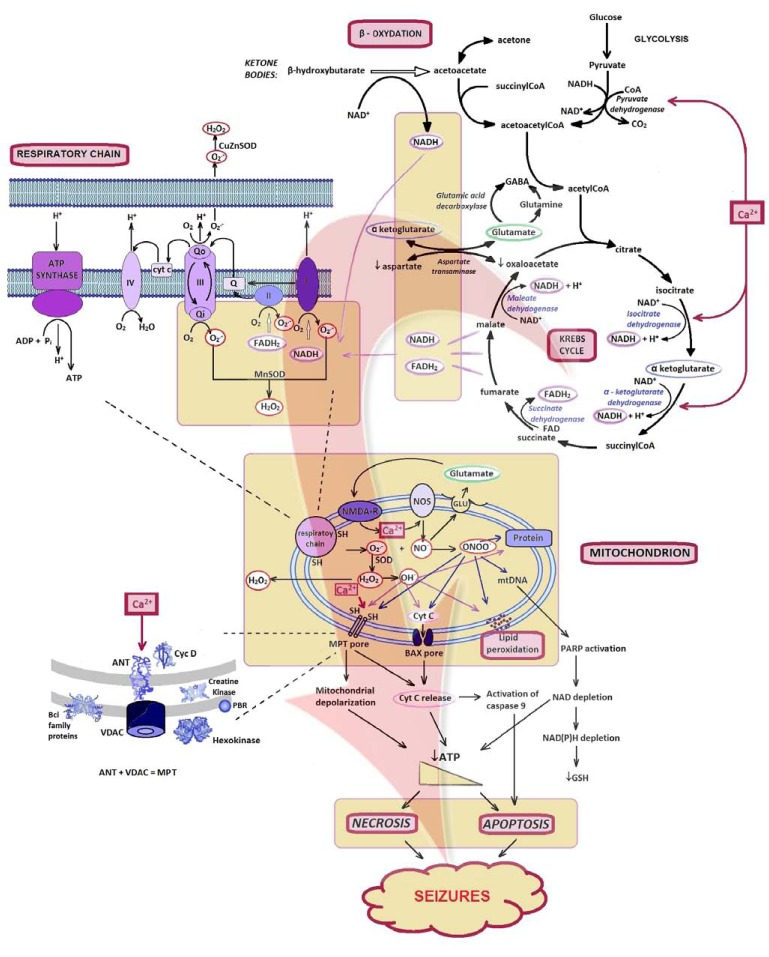Fig. (2).
Assumed role of mitochondria, Ca2+, and ROS in neuronal excitotoxicity and epileptogenesis. After increase of mitochondrial Ca2+ influx, mediated by various mechanisms, the generation of both ROS and RNS elicit downstream cell death signalling. The Ca2+ passage can lead to propagation and amplification of mitochondrial Ca2+ overload. The mitochondrial respiratory chain is shown with complexes I, II, III, IV, and V. ROS and RNS can react with thiol groups (-SH) and subsequently cause opening of the MTP pore and Bax pore. One of the consequences is release of cyt-c across the outer membrane, which is the major initiation step in a cascade reaction of cell apoptosis. The cell death pathway may switch between apoptosis and necrosis, in relation to the intracellular ATP availability.
Symbols legend:
Ac-CoA: Acetyl coenzyme A; ANT: Adenine nucleotide translocase; Cyt-c: Cytochrome c; FADH2: Flavin adenine dinucleotide phosphate; GSH: Reduced glutathione; I–V: complexes I–V; MnSOD: Manganese superoxide dismutase; MPT: mitochondrial permeability transition; mtDNA: Mitochondrial deoxyribonucleinic acid; NAD: Nicotine adenine dinucleotide; NO: Nitric oxide; NOS: NO synthase; PARP: Poly-ADP-ribose polymerase; PBR: Peripheral benzodiazepine receptor; RNS: Reactive nitrogen species; ROS: Reactive oxygen species; VDAC: Voltage-dependent anion channel.

